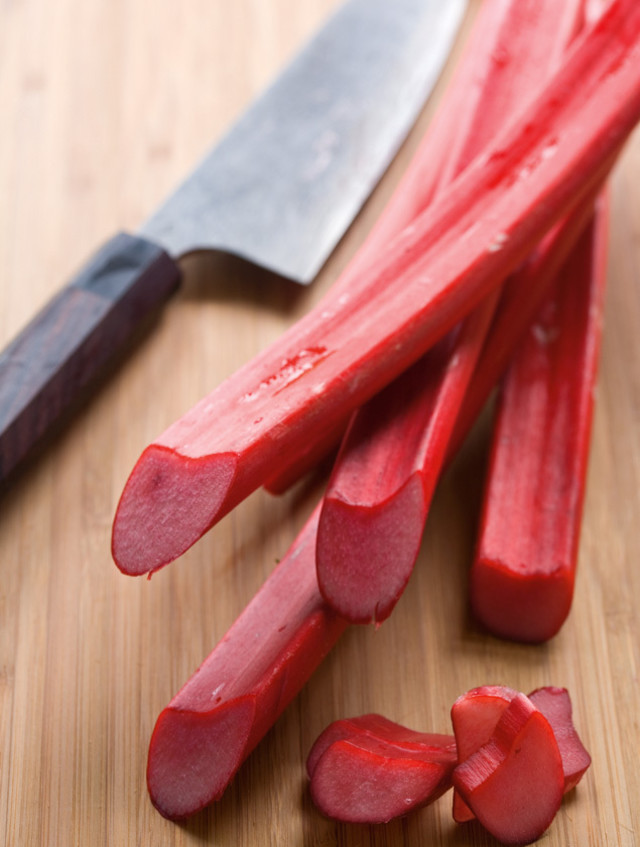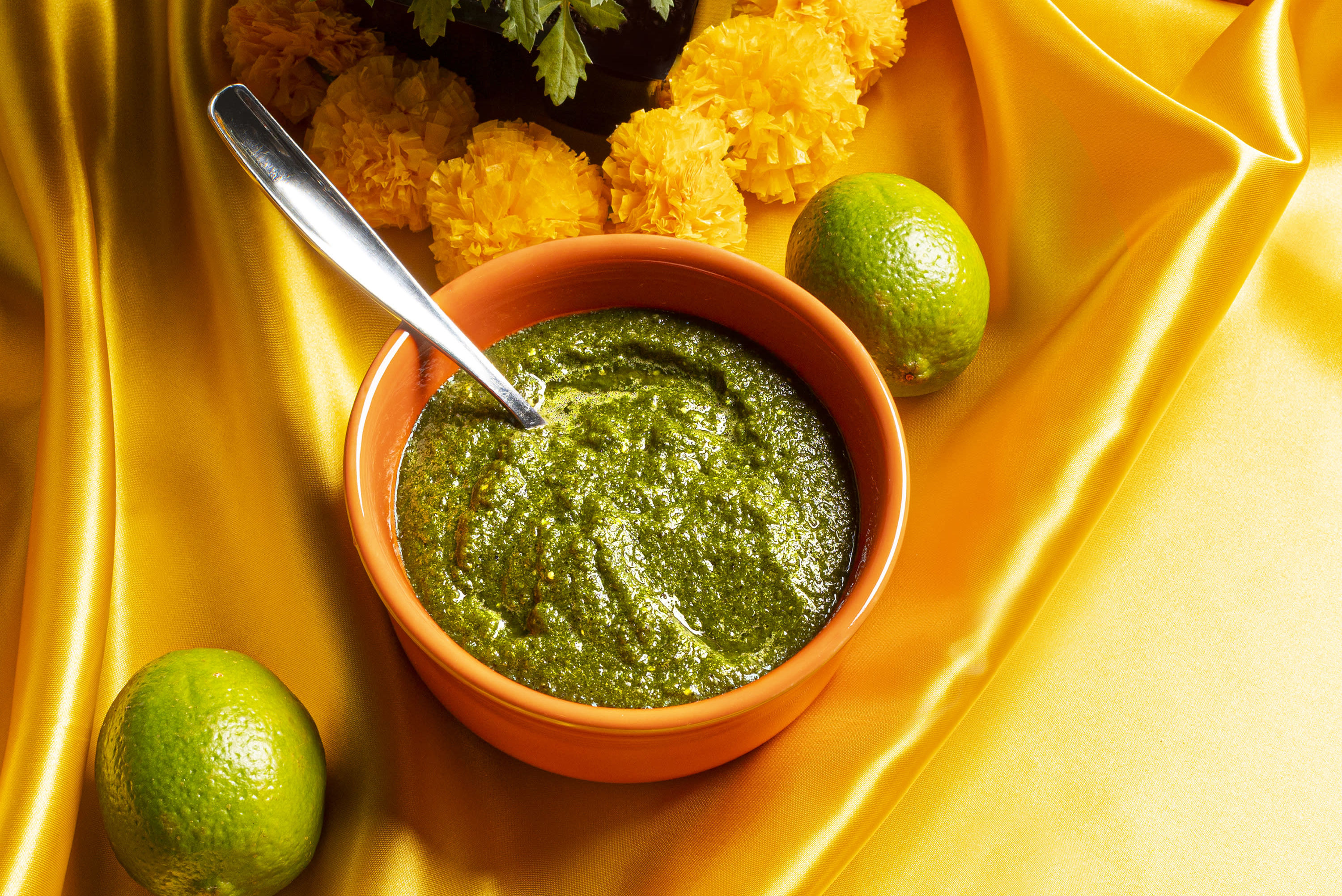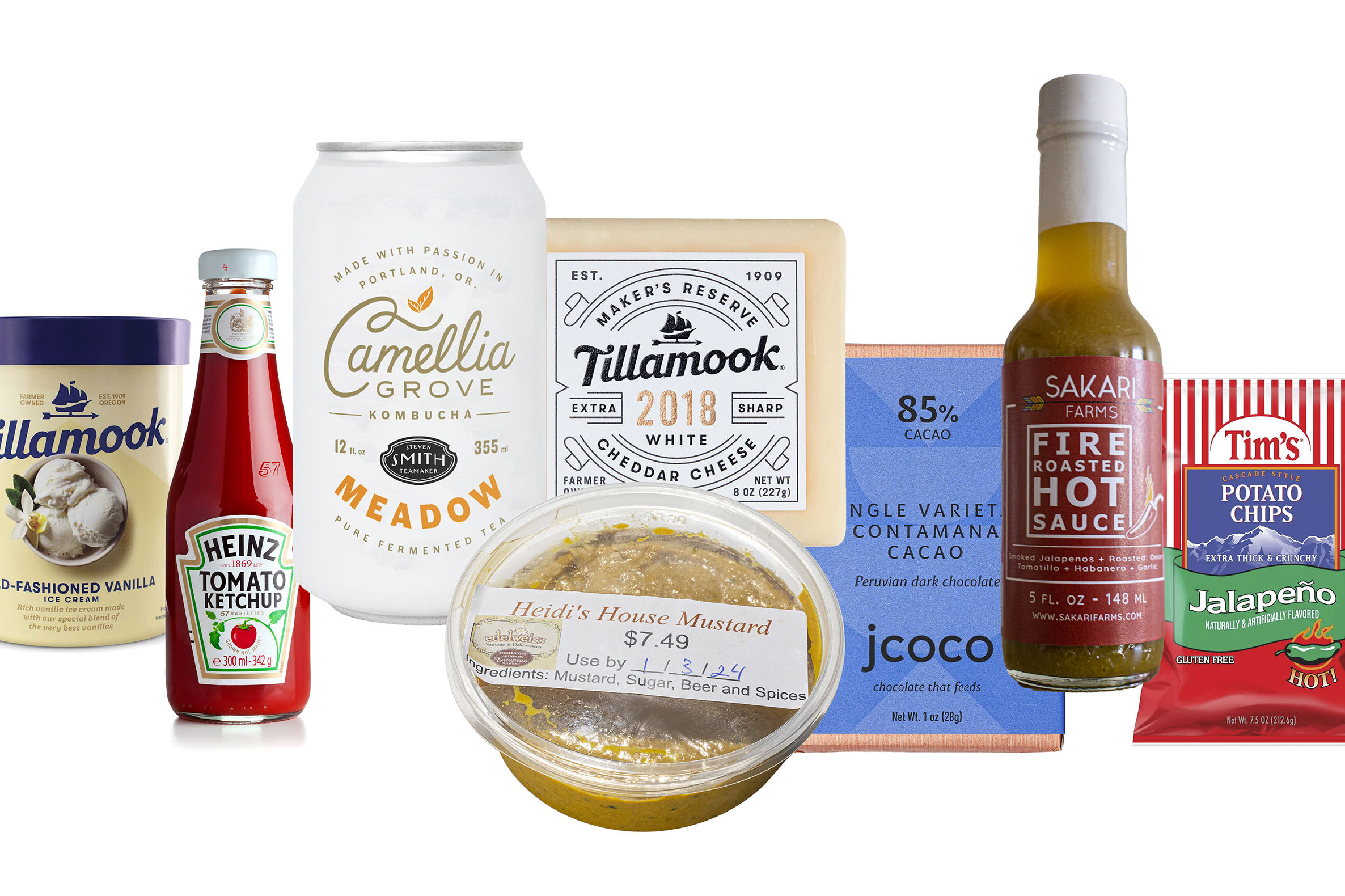Go Savory

Image: Lara Ferroni
CHEF VITALY PALEY’S childhood memories of rhubarb don’t, like most of ours, involve eating strawberry-rhubarb pie. In fact, Paley, who grew up in the Soviet Union in the 1960s and ’70s, did not eat rhubarb at all; instead, he played under its four-foot-tall stalks. “Perhaps because of that, I looked at rhubarb differently,” says Paley.
Indeed, soon after he opened Paley’s Place in 1995, the chef set out to transform rhubarb into something more than just a dessert. “When spring rolled around, rhubarb was the first thing through the door, and we were starving for something new to do with it,” he says.
The best way to treat the acidic vegetable (sans the toxic leaves) as a savory ingredient, Paley surmised, might be as the base flavor for sauces. The only problem was figuring out how to extract juice from the thick stems.
“We tried juicing it without peeling it first,” says Paley. Unfortunately the rhubarb was too fibrous to render much juice, but after sampling those few droplets of fruity, grassy liquid, Paley got to thinking about other ways to procure more.
The technique he ultimately employed, it turns out, bore a slight resemblance to the method most home cooks use to prepare the filling for rhubarb pie: chopping the stalks into small pieces and cooking them in liquid. But in this case Paley used white wine, water, and just a touch of sugar or honey (versus the cups of sugar required to transform rhubarb into pie filling). After he pressed the mixture through a strainer, the resulting liquid became a launching point for a whole array of sauces and condiments.
To accompany roasted halibut, Paley often uses the rhubarb liquid to make a beurre blanc, for instance, and come springtime he whips it into a rhubarb aioli to pair with steamed asparagus or to slather onto grilled pork chops.
When he’s got an excess of rhubarb, however, Paley makes pickles out of the piquant stalks. “The salt cuts down some of the rhubarb’s astringency and makes a nice balance for the plant’s natural sugars,” he says. Paley sometimes serves the pickled rhubarb as a side for his grilled pork chop with rhubarb aioli, a dish that’s about as far from pie filling as it gets.
Rhubarb Aioli
To control the stream of oil, chef Vitaly Paley recommends using a squirt bottle with a tip. If the aioli becomes too thick, try whisking in 1 tsp of lukewarm water.
Yields about 2 cups
- 1 lb rhubarb stalks, sliced ½-inch thick
- 3 cups water
- ½ cup white wine
- ½ cup honey
- 3 egg yolks
- 1 clove garlic
- 1 tsp Dijon mustard
- 1½ cup canola oil
- ½ lemon, juiced
- 1 tsp salt
- In a straight-edged saucepan, combine rhubarb, water, white wine, and honey. Over medium heat, reduce mixture by half. If a discolored foam forms at the top, remove with a ladle.
- Press the reduced mixture through a chinois or fine-mesh strainer. Discard solids.
- Return resulting liquid to saucepan and, over medium heat, reduce to ? cup. Let cool.
- Using a mortar and pestle, crush garlic into a pulp. Add egg yolks and mustard to mortar and, using a whisk, mix to form a paste.
- Slowly drizzle oil into mixture, whisking constantly. When oil is incorporated, whisk in lemon juice and salt.
- Fold in rhubarb reduction.
Pickled Green Rhubarb
Rhubarb grows in a variety of colors, from rusty red to speckled pink or bright green, but color does not necessarily correspond to sweetness. To make these refrigerator pickles, we suggest using a sweeter, green variety like Victoria, but any variety of green rhubarb will do.
Yields about 6 cups
- 4 stalks green rhubarb
- 5 cups rice wine vinegar
- 1 cup mirin
- 1 tbsp salt
- 3 tbsp sugar
- 3 star anise
- 1 stick cinnamon
- 5 pods cardamom
- Slice rhubarb into ¼-inch-thick slices and submerge in ice water.
- In a large pot, bring the rest of the ingredients to a boil for 2 minutes.
- Remove from heat and cool to 180 degrees.
- Remove rhubarb from ice water and cover with pickling liquid in a jar.
- Allow rhubarb to reach room temperature, then cover and let sit at least 12 hours in refrigerator.
The pickles will keep for up to 3 weeks in the refrigerator.




